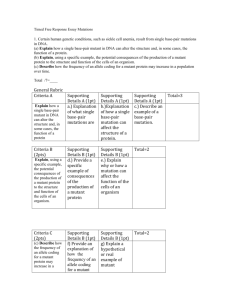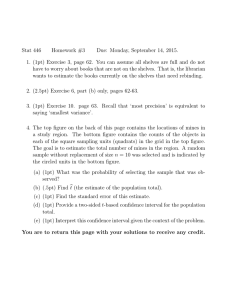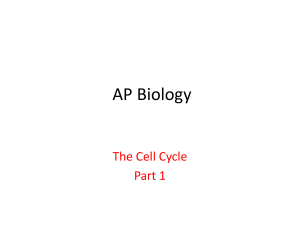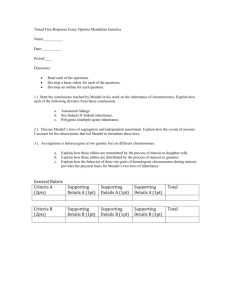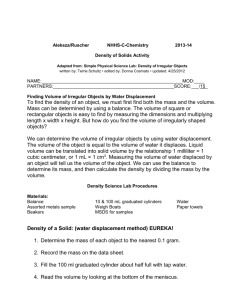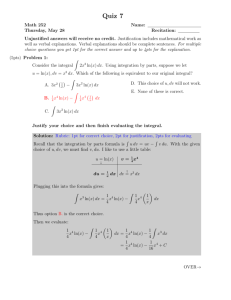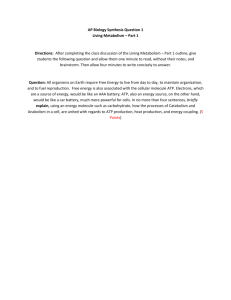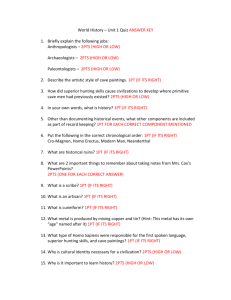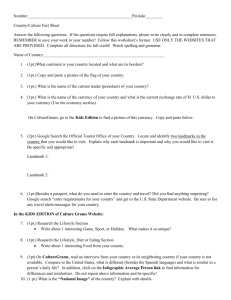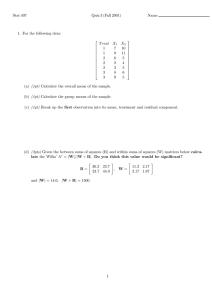Timed Free Response Essay Mutations
advertisement
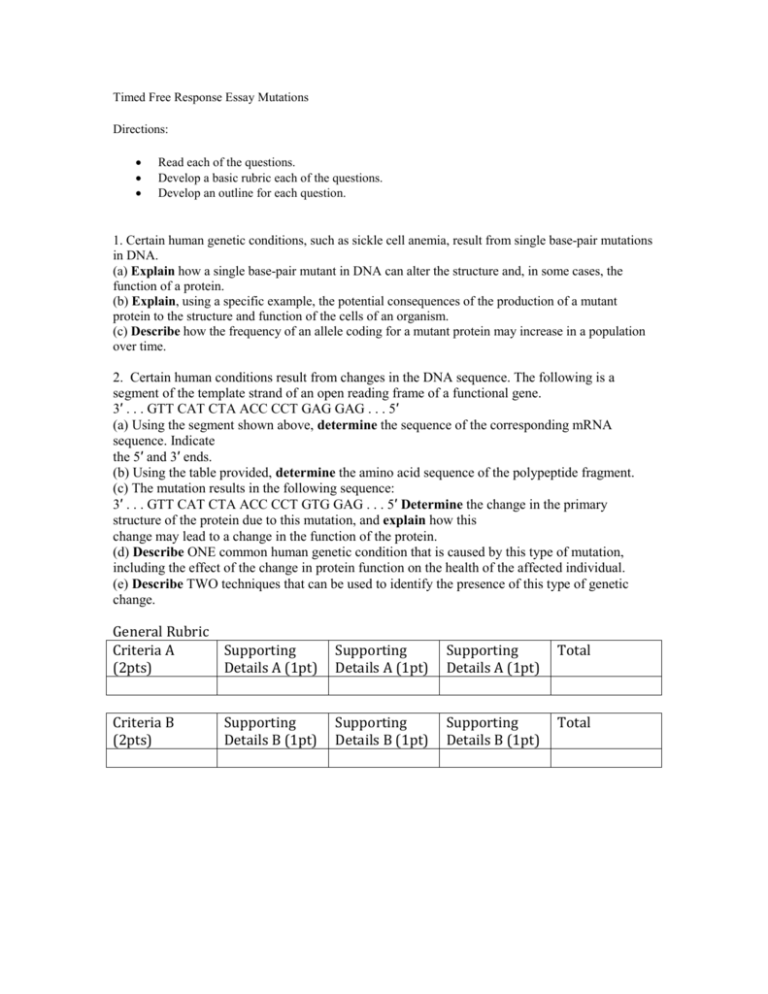
Timed Free Response Essay Mutations Directions: Read each of the questions. Develop a basic rubric each of the questions. Develop an outline for each question. 1. Certain human genetic conditions, such as sickle cell anemia, result from single base-pair mutations in DNA. (a) Explain how a single base-pair mutant in DNA can alter the structure and, in some cases, the function of a protein. (b) Explain, using a specific example, the potential consequences of the production of a mutant protein to the structure and function of the cells of an organism. (c) Describe how the frequency of an allele coding for a mutant protein may increase in a population over time. 2. Certain human conditions result from changes in the DNA sequence. The following is a segment of the template strand of an open reading frame of a functional gene. 3′ . . . GTT CAT CTA ACC CCT GAG GAG . . . 5′ (a) Using the segment shown above, determine the sequence of the corresponding mRNA sequence. Indicate the 5′ and 3′ ends. (b) Using the table provided, determine the amino acid sequence of the polypeptide fragment. (c) The mutation results in the following sequence: 3′ . . . GTT CAT CTA ACC CCT GTG GAG . . . 5′ Determine the change in the primary structure of the protein due to this mutation, and explain how this change may lead to a change in the function of the protein. (d) Describe ONE common human genetic condition that is caused by this type of mutation, including the effect of the change in protein function on the health of the affected individual. (e) Describe TWO techniques that can be used to identify the presence of this type of genetic change. General Rubric Criteria A Supporting (2pts) Details A (1pt) Supporting Details A (1pt) Supporting Details A (1pt) Total Criteria B (2pts) Supporting Details B (1pt) Supporting Details B (1pt) Total Supporting Details B (1pt)

